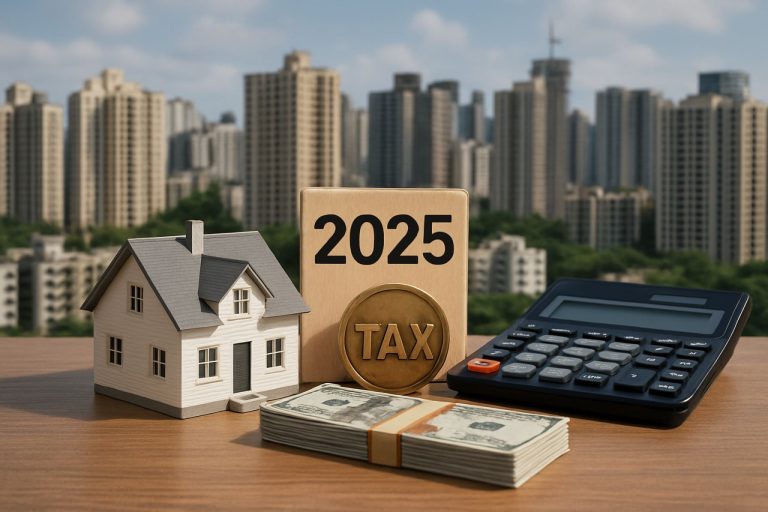
Table of Contents
- Executive Summary: Nepal’s Real Estate Market at a Glance
- Current Market Overview & Key 2025 Statistics
- Emerging Growth Hotspots and Regional Trends
- Major Investment Opportunities and Risks
- Legal Framework: Property Ownership, Registration, and Recent Law Changes
- Taxation & Compliance: What Investors and Homeowners Need to Know
- Government Policies, Incentives, and Official Regulations
- Infrastructure & Urban Development Shaping Future Demand
- Forecast: Market Outlook for 2025–2029
- Official Resources & How to Stay Compliant (gov.np, moha.gov.np, nrb.org.np)
- Sources & References
Executive Summary: Nepal’s Real Estate Market at a Glance
Nepal’s real estate market in 2025 is characterized by steady urbanization, regulatory reforms, and growing domestic demand, despite global economic uncertainties. The sector has seen consistent activity, particularly in Kathmandu Valley, Pokhara, and other emerging urban centers, driven by infrastructure development, remittance-fueled investment, and a rising middle class.
According to the Nepal Rastra Bank, real estate loan exposure accounted for approximately 16.7% of total lending by Nepalese banks as of fiscal year 2023/24, underscoring the sector’s systemic importance. Property transaction volumes rebounded in 2024 after pandemic-era slowdowns, with the Inland Revenue Department reporting a 14% year-on-year increase in land registration and transfer tax revenues.
Policy-wise, 2023 and 2024 saw continued enforcement of anti-money laundering (AML) measures, with the Financial Information Unit, Nepal requiring stricter customer due diligence in real estate transactions. The Ministry of Federal Affairs and General Administration and local governments have also moved toward digitalization of land records, aiming to improve transparency and reduce fraud. Amendments to the Land (Measurement) Act and the Land Revenue Act are under consideration to further streamline property transfers and clarify ownership rights.
Compliance remains a focus: foreign nationals are still largely restricted from directly purchasing land or homes, except under certain government-approved joint venture arrangements, as set out by the Nepal Law Commission. Developers and agents must comply with zoning, environmental, and building bylaws enforced by municipal authorities, with the Department of Urban Development and Building Construction actively monitoring urban projects.
Looking ahead, the sector is expected to remain resilient, buoyed by projected GDP growth, ongoing infrastructure projects, and the government’s National Urban Development Strategy. Challenges persist, including land fragmentation, regulatory compliance costs, and the need for affordable housing. However, with continued digitalization, legal reforms, and rising investor confidence, Nepal’s real estate market is poised for measured but positive growth through 2025 and beyond.
Current Market Overview & Key 2025 Statistics
Nepal’s real estate sector has shown remarkable resilience and adaptability in recent years, shaped by regulatory interventions, urbanization trends, and shifting investment patterns. As of 2025, the market is characterized by steady growth in property transactions, particularly in urban centers such as Kathmandu, Pokhara, and Bharatpur. The government’s continued focus on infrastructure development and urban expansion has further fueled demand for both residential and commercial properties.
According to the Nepal Rastra Bank, the real estate and housing sector contributed approximately 7% to the national GDP in the latest fiscal year. Land and housing transaction volumes have rebounded post-pandemic, with land price indices in Kathmandu Valley registering an annual growth rate of 12% in 2024 and expected to remain in double digits into 2025. The surge in remittance inflows—totaling NPR 1.25 trillion in the previous year—continues to drive investment in real estate, as noted in the central bank’s annual macroeconomic report.
On the regulatory front, the Inland Revenue Department has implemented stricter compliance protocols for property registration and tax declaration, with mandatory PAN (Permanent Account Number) requirements and electronic filing for land transactions above NPR 5 million. The Department of Land Reform and Management has also accelerated digitization of land records, aiming for a fully integrated digital registry by 2026, which is expected to curb fraudulent transactions and enhance transparency.
The government’s Housing Policy 2022, enforced by the Ministry of Urban Development, continues to guide urban planning and affordable housing initiatives. New zoning laws and environmental compliance standards have been put in place to regulate high-rise developments and protect agricultural lands, with stricter scrutiny on land use conversions.
Looking forward, the real estate sector is projected to maintain a growth trajectory of 8-10% annually through 2027, driven by ongoing urban migration, infrastructure projects (such as the Kathmandu-Terai Fast Track and new ring roads), and increasing formalization of property transactions. However, risks remain from potential policy tightening on land speculation and possible interest rate hikes by the central bank.
- Real estate sector GDP share (2024): ~7% (Nepal Rastra Bank)
- Annual land price growth in Kathmandu Valley (2024): 12% (Nepal Rastra Bank)
- Remittance inflow (2024): NPR 1.25 trillion (Nepal Rastra Bank)
- Digitization of land records ongoing (Department of Land Reform and Management)
- Mandatory PAN and digital filing for land transactions over NPR 5 million (Inland Revenue Department)
Overall, Nepal’s real estate market in 2025 is defined by robust growth, regulatory modernization, and a cautious optimism for continued expansion amid evolving compliance and urbanization dynamics.
Emerging Growth Hotspots and Regional Trends
The real estate sector in Nepal is witnessing notable shifts in regional demand, driven by urbanization, infrastructure expansion, and policy reforms. As of 2025, Kathmandu Valley remains the dominant market, but emerging hotspots are gaining traction, particularly in Provinces 2, 3, and Lumbini Province. Key growth corridors include areas adjacent to major highways, new industrial zones, and cities targeted by the government’s decentralization and urban development initiatives.
According to the Ministry of Federal Affairs and General Administration, urbanization rates continue to rise, with more than 20% of the population now residing in officially designated urban municipalities—a significant increase from a decade ago. The government’s Ministry of Urban Development has prioritized infrastructure investments such as the Kathmandu-Terai/Madhesh Expressway, the expansion of Pokhara and Bhairahawa airports, and new industrial estates in Birgunj and Butwal, all of which are spurring demand for both residential and commercial properties in these corridors.
In terms of regulatory compliance, the Inland Revenue Department has tightened oversight on property transactions to curb money laundering and tax evasion, particularly in fast-growing peri-urban districts. The introduction of digital land records and e-registration systems by the Department of Land Management and Archive is streamlining property transfers, reducing fraud, and boosting investor confidence in new regional markets.
Statistically, land registration data for FY 2023/24 indicate that real estate transactions outside Kathmandu Valley grew by over 18%, compared to 11% growth within the Valley itself (Department of Land Management and Archive). Notably, cities like Bharatpur, Nepalgunj, and Itahari have reported double-digit increases in building permit applications and land parcel sales, reflecting their status as emerging growth hotspots.
Looking ahead, the real estate outlook for 2025 and beyond is buoyed by ongoing decentralization, new infrastructure projects, and the government’s Smart City programs, which target regional urban centers for integrated development. Compliance requirements are expected to tighten further in line with Nepal’s commitments to anti-money laundering standards (Nepal Rastra Bank), but the ongoing digital transformation in land administration is likely to improve transparency and market efficiency across regional markets.
Major Investment Opportunities and Risks
The real estate sector in Nepal is entering a dynamic phase in 2025, shaped by evolving regulations, economic shifts, and demographic trends. This section analyzes the prominent investment opportunities and risks within the sector, focusing on key events, legal compliance, statistical insights, and forward-looking perspectives.
-
Investment Opportunities:
- Urban Expansion and Housing Demand: Nepal’s urban population continues to grow, particularly in Kathmandu Valley and cities like Pokhara and Bharatpur, driving sustained demand for residential and mixed-use developments. Government data indicates the urban population now exceeds 21% and is projected to rise further in coming years (Central Bureau of Statistics, Nepal).
- Tourism and Hospitality-Linked Real Estate: With tourism recovering and infrastructure initiatives under the Nepal Tourism Strategic Plan, there is renewed interest in hotel, resort, and homestay investments, especially in regions such as Lumbini and the Annapurna circuit (Ministry of Culture, Tourism and Civil Aviation).
- Affordable Housing and Urban Renewal: The government’s plans for affordable housing projects and urban redevelopment, including public-private partnerships, present opportunities for developers and investors looking to address the housing deficit (Ministry of Urban Development).
- Industrial and Logistic Parks: With Nepal’s expanding trade and cross-border connectivity, there is growth potential in industrial zones and logistics hubs, especially along major corridors (Ministry of Industry, Commerce and Supplies).
-
Compliance and Legal Framework:
- The Land (Measurement) Act, 2019 (2076) and Land Use Act, 2019 (2076) have introduced stricter zoning, landholding ceilings, and usage restrictions, particularly to curb land fragmentation and speculative transactions. Investors must comply with these frameworks to avoid penalties (Ministry of Law, Justice and Parliamentary Affairs).
- The Foreign Investment and Technology Transfer Act, 2019 restricts direct foreign ownership of land for residential purposes but allows certain investments in tourism and industrial real estate, subject to government approval (Office of the Investment Board Nepal).
-
Risks and Challenges:
- Regulatory Uncertainty: Amendments to land and property laws, including ongoing debates over further restrictions on land sales and zoning changes, may impact project feasibility and investor confidence.
- Market Volatility: Fluctuating property prices, coupled with rising interest rates and cautious lending from banks, could affect liquidity and project financing (Nepal Rastra Bank).
- Infrastructure and Execution Risks: Delays in municipal approvals, infrastructure bottlenecks, and challenges in land acquisition remain persistent obstacles for large-scale projects.
-
Outlook:
- The real estate market is expected to remain robust in urban and peri-urban centers, supported by demographic trends and public sector initiatives. However, investors should monitor regulatory updates, ensure legal compliance, and factor in execution risks to capitalize on emerging opportunities in 2025 and beyond.
Legal Framework: Property Ownership, Registration, and Recent Law Changes
The legal framework governing real estate in Nepal is primarily based on the Muluki Civil Code 2074 (2017), the Land Revenue Act 2034 (1977), and related directives issued by the Ministry of Land Management, Cooperatives and Poverty Alleviation. Property ownership is generally open to Nepali citizens, while foreign nationals are restricted from directly owning land or housing, except in specific cases outlined by government policy. Inheritance and transfer of property are regulated under the Civil Code, with provisions for both ancestral and self-acquired property.
Registration of property is mandatory for any transfer of ownership, whether through sale, inheritance, gift, or exchange. The process is overseen by the Department of Land Management and Archive, requiring presentation of supporting documents, payment of registration fees (typically 4–5% of the property value), and adherence to prescribed procedures to ensure clear title transfer. Ownership is only legally recognized once the transaction is recorded at the local Land Revenue Office (Department of Land Management and Archive).
Recent years have seen several legal reforms aimed at increasing transparency, curbing illegal land fragmentation, and promoting urban planning. The Land Use Act 2076 (2019) introduced zoning restrictions, classifying land as agricultural, residential, industrial, or other purposes, and prohibits conversion of agricultural land to non-agricultural uses without government approval. The government has also implemented digital land records to reduce fraud and streamline transactions, with a target to cover all 77 districts by 2025 (Ministry of Land Management, Cooperatives and Poverty Alleviation).
Compliance with anti-money laundering measures has been strengthened. The Financial Information Unit under Nepal Rastra Bank requires verification of source of funds and reporting of suspicious transactions for real estate dealings above certain thresholds. Notably, in 2023, the government amended the Money Laundering Prevention Act to include stricter scrutiny of real estate transactions (Nepal Rastra Bank).
Looking to 2025 and beyond, the government is expected to further enforce land ceiling regulations (maximum landholding limits) and address informal settlements through regularization and rehabilitation programs. Digitization, stricter compliance, and a focus on planned urbanization are likely to define the regulatory landscape. Market participants should monitor ongoing updates to property tax, land use policy, and foreign participation regulations, as these will influence compliance, investment, and transaction processes in the years ahead.
Taxation & Compliance: What Investors and Homeowners Need to Know
The taxation and compliance landscape for real estate in Nepal has become increasingly regulated, reflecting the government’s efforts to formalize transactions and boost revenue collection. As of 2025, both investors and homeowners must navigate multiple layers of fiscal and legal obligations, from property acquisition to ongoing ownership and eventual sale.
A key requirement for all property transactions is the registration of deeds with the district-level Department of Land Management and Archive. Transfer of ownership is subject to a registration fee—typically 4-5% of the government-assessed value—and a capital gains tax, which, as of recent regulations, is generally 5% for individuals and 10% for firms or companies on the profit from the sale of property. The government periodically reassesses property values to ensure tax compliance and mitigate underreporting, which was a common issue in previous years.
Non-resident Nepalis (NRNs) are now allowed to purchase certain categories of real estate, following amendments to the Non-Resident Nepali Act. However, they must comply with specific reporting and approval requirements set by the Nepal Rastra Bank regarding the source of foreign funds and remittances, and register their investments with the Department of Industry for tax and repatriation purposes.
Real estate buyers are also subject to local taxes, such as annual property taxes collected by municipal authorities. The Ministry of Federal Affairs and General Administration has directed local governments to tighten enforcement of property tax collection, with digital systems being introduced for transparency and efficiency.
Statistically, the real estate sector contributed approximately 8% to Nepal’s GDP in 2023-2024, with transaction volumes expected to grow in the coming years as urbanization accelerates and remittance inflows remain strong (Nepal Rastra Bank). However, authorities have also warned of the risks of speculative bubbles, and compliance checks are expected to intensify, particularly concerning anti-money laundering (AML) regulations under the Financial Information Unit.
Looking ahead, the government plans further digitization of land records and tax systems, and is considering additional regulations for real estate professionals to ensure consumer protection and market stability. Investors and homeowners are advised to stay informed on evolving requirements and to seek professional guidance to ensure full compliance with all legal and tax obligations.
Government Policies, Incentives, and Official Regulations
The regulatory and policy framework governing real estate in Nepal is primarily shaped by a combination of national legislation, periodic government directives, and the oversight of sectoral authorities. As of 2025, the Ministry of Land Management, Cooperatives and Poverty Alleviation (MoLMCPA) serves as the chief government body responsible for land and real estate policy, including the administration of land registration, zoning, and compliance with relevant acts.
Key legislations impacting the sector include the Land (Measurement) Act, 1963, Land Reform Act, 1964, and the Land Revenue Act, 1978, which collectively determine land ownership ceilings, land use classification, and registration requirements. The government continues to enforce restrictions on maximum land holding by individuals and entities, and the transfer of agricultural land for non-agricultural purposes is tightly regulated. In 2024-2025, the government has emphasized digitalization of land records and e-registration systems to enhance transparency and reduce fraudulent transactions, as outlined in recent reforms from the Department of Land Management and Archive.
Foreign investment in real estate remains restricted. Non-Nepali individuals and entities are generally prohibited from owning land or property outright, barring exceptions under special industrial or tourism-related projects approved by the government. The Investment Board Nepal provides guidance on such exceptions under specific circumstances, but foreign direct investment (FDI) in residential and commercial property remains tightly controlled.
Recent government incentives have focused on affordable housing and urban infrastructure. The National Urban Development Strategy (NUDS), implemented under the Ministry of Urban Development, targets the development of planned settlements and incentives for developers constructing affordable housing units. The government provides tax concessions, subsidized loans, and streamlined approval processes for projects aligned with these strategic priorities.
In 2025, compliance requirements for real estate transactions include mandatory property valuation, anti-money laundering (AML) protocols, and the use of standardized sale and purchase agreements. The Financial Information Unit at Nepal Rastra Bank enforces AML regulations, requiring real estate professionals and notaries to report large or suspicious transactions.
Looking ahead, the outlook for real estate policy in Nepal centers on further digitalization, stricter enforcement of zoning and land use regulations, and a cautious approach to foreign investment. The government plans to expand affordable housing incentives and continue modernizing land administration systems, aiming to balance economic growth with transparency and equitable land distribution.
Infrastructure & Urban Development Shaping Future Demand
Nepal’s real estate sector is undergoing significant transformation, driven by rapid urbanization, infrastructure investment, and evolving regulatory frameworks. As of 2025, urban population growth continues to fuel demand for housing and commercial properties, particularly in the Kathmandu Valley and emerging cities like Pokhara and Butwal. Government initiatives, such as the National Urban Development Strategy and flagship projects like the Kathmandu Terai/Madhesh Fast Track and the Gautam Buddha International Airport, are enhancing regional connectivity and making peripheral areas more attractive for real estate development (Ministry of Urban Development).
Legal and compliance frameworks have also evolved in response to the sector’s expansion. The Land (Measurement) Act, National Building Code, and the Real Estate (Transaction) Act are central to regulating land subdivision, construction standards, and property transactions. Mandatory land registration and property tax requirements are enforced by local governments, and the Department of Land Management and Archive continues to digitize cadastral records to increase transparency and reduce fraud (Department of Land Management and Archive). Recent regulatory updates in 2024 require stricter disclosure of beneficial ownership in real estate transactions, aiming to address anti-money laundering concerns and enhance market integrity (Nepal Rastra Bank).
Statistically, the urbanization rate in Nepal stands at approximately 21% in 2025, with Kathmandu Valley accounting for over 35% of the nation’s urban population (Central Bureau of Statistics). The annual growth rate of registered property transactions has averaged 8% over the past three years, reflecting both increased demand and improved administrative processes. Despite recent macroeconomic challenges, foreign direct investment in large-scale real estate and infrastructure projects remains stable, supported by policy continuity and streamlined approval procedures (Investment Board Nepal).
Looking forward, the outlook for Nepal’s real estate market from 2025 through the rest of the decade is positive but nuanced. The pace of infrastructure development—especially in transport and utilities—is expected to unlock new suburban and peri-urban zones for residential and commercial use. However, stakeholders must navigate ongoing reforms in land use policy, stricter building code enforcement, and potential interest rate fluctuations affecting mortgage lending. Continuous improvements in compliance, transparency, and digital land administration are likely to shape investor confidence and sustainable urban growth (Ministry of Finance).
Forecast: Market Outlook for 2025–2029
The outlook for Nepal’s real estate market from 2025 through 2029 is shaped by evolving regulatory frameworks, demographic trends, and economic drivers. The real estate sector in Nepal has seen notable changes in recent years, particularly following amendments to land and property transaction laws and increased government oversight. With the enactment of the Ministry of Land Management, Cooperatives and Poverty Alleviation’s streamlined digital land registration system, transparency in property transactions has improved, potentially encouraging both domestic and foreign investment.
Key legislative updates include the Land (Survey and Measurement) Regulation, which mandates digital records for land ownership, and heightened checks for money laundering in real estate transactions, as directed by the Nepal Rastra Bank. Stricter bank lending policies—such as a 40% loan-to-value cap on real estate loans and enhanced due diligence—are expected to moderate speculative buying and stabilize price increases. The Nepal Rastra Bank continues to monitor the sector’s risk profile, with periodic reviews of lending criteria to ensure financial sector stability.
Statistical indicators show that, as of 2024, real estate transactions in major urban centers like Kathmandu, Pokhara, and Chitwan contributed over 9% to Nepal’s GDP. According to the Central Bureau of Statistics, urbanization rates are projected to reach 25% by 2025, with an estimated annual population growth in urban areas of 3.5%. This sustained migration is likely to fuel demand for residential and commercial properties, particularly medium-density housing and mixed-use developments.
Despite this, the market faces challenges. Restrictions on land fragmentation (to combat unplanned urban sprawl), and ongoing efforts to digitize land records may temporarily slow transaction volumes, but are expected to yield long-term benefits in legal certainty and investor confidence. Furthermore, the government has signaled intentions to review property tax policies and foreign ownership rules between 2025 and 2027, which could influence investment patterns.
The sector’s compliance environment is likely to become more stringent. The Inland Revenue Department is enhancing property transaction monitoring to curb tax evasion. Developers and buyers will need to adapt to more rigorous documentation and reporting standards.
In summary, the forecast for 2025–2029 suggests moderate but stable growth in Nepal’s real estate market, underpinned by regulatory modernization, improving infrastructure, and demographic momentum. Ongoing policy reforms and technological adoption are expected to enhance transparency, compliance, and sustainable market expansion.
Official Resources & How to Stay Compliant (gov.np, moha.gov.np, nrb.org.np)
The real estate sector in Nepal is governed by a combination of central and local regulations, with oversight from key government bodies and financial authorities. Staying compliant requires adherence to evolving legal frameworks, registration requirements, and financial protocols, particularly as the sector adapts to changing market conditions and regulatory reforms in 2025 and beyond.
- Land Registration & Title Transfer: All land and property transactions must be registered at the local Land Revenue Office, as mandated by the Department of Land Revenue and Archive. Title transfer, mutation, and related processes are carried out in accordance with the Land Revenue Act and directives from the Ministry of Land Management, Cooperatives and Poverty Alleviation. These processes typically require submission of citizenship certificates, land ownership documents, and payment of applicable registration fees and taxes.
- Foreign Investment Compliance: The acquisition and ownership of real estate by foreign nationals remain highly restricted. Foreigners can generally only lease property for business purposes and cannot directly purchase land or residential property. The Ministry of Industry and the Ministry of Home Affairs regulate permissions and monitor compliance for foreign investment in accordance with the Foreign Investment and Technology Transfer Act.
- Anti-Money Laundering (AML) & Financial Transactions: To prevent money laundering and illicit financial flows through real estate, the Nepal Rastra Bank (central bank) enforces strict KYC (Know Your Customer) and AML compliance measures for property-related transactions, especially those involving large sums or cross-border transfers. Reporting thresholds and procedures are outlined in directives issued by the central bank and the Department of Money Laundering Investigation.
- Taxation: Buyers and sellers must comply with capital gains tax, value-added tax (VAT) where applicable, and annual property taxes. The Inland Revenue Department provides guidance on tax rates, exemptions, and documentation required for compliance.
With ongoing urbanization, infrastructure projects, and evolving policies, regulatory vigilance is expected to intensify through 2025. Stakeholders should regularly consult official resources such as the Ministry of Home Affairs, Nepal Rastra Bank, and Ministry of Land Management for up-to-date requirements and compliance updates.
Sources & References
- Nepal Rastra Bank
- Inland Revenue Department
- Ministry of Federal Affairs and General Administration
- Nepal Rastra Bank
- Ministry of Urban Development
- Ministry of Federal Affairs and General Administration
- Ministry of Culture, Tourism and Civil Aviation
- Ministry of Urban Development
- Ministry of Law, Justice and Parliamentary Affairs
- Office of the Investment Board Nepal
- Ministry of Land Management, Cooperatives and Poverty Alleviation
- Department of Industry
- Investment Board Nepal
- Inland Revenue Department
- Ministry of Industry



